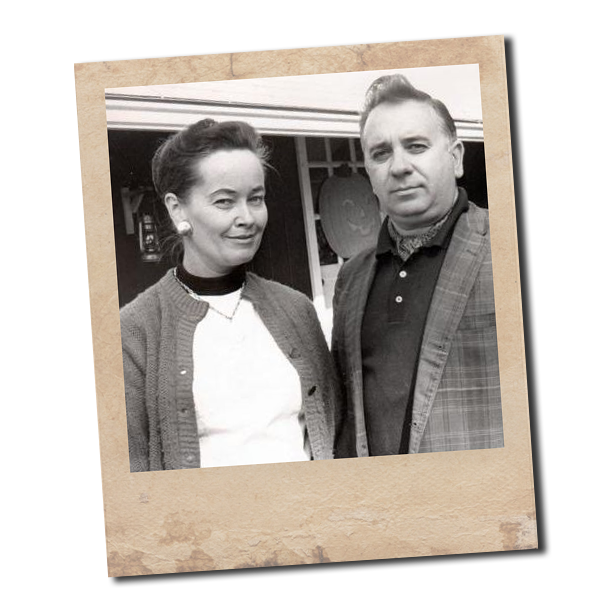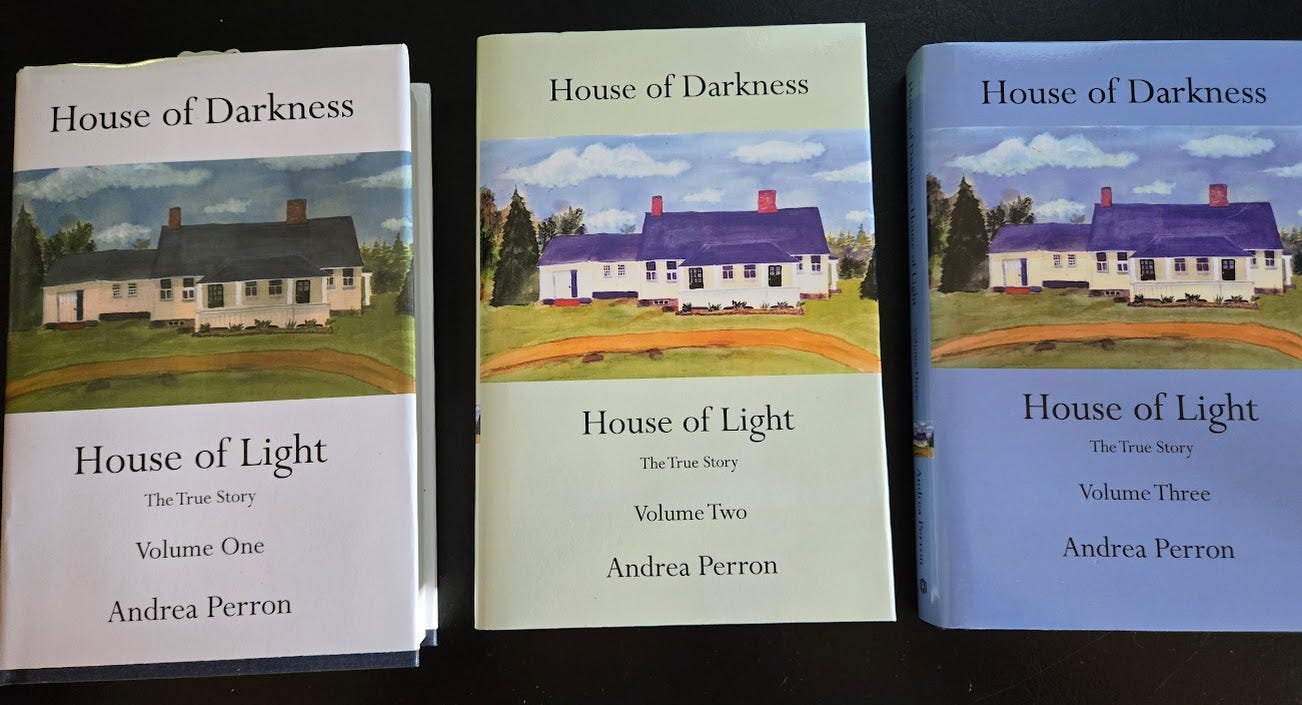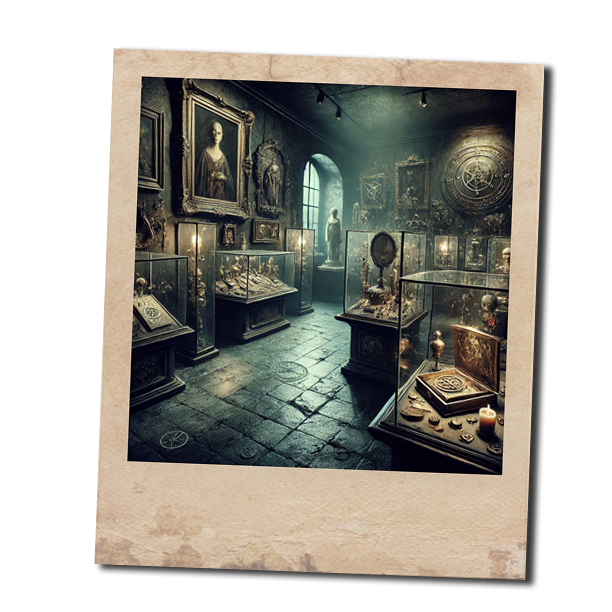🔎Paranormal Insight: The Warrens
A Controversial Name In The World Of The Paranormal
Classification: Spiritual Investigation / Occult Containment
Known Contexts: Hauntings, Demonic Possessions, Cursed Objects, High-Profile Paranormal Cases
Associated Beliefs: Catholic Demonology, Spirit Attachment Theory, Ritual Cleansing, Artifact Containment
Phenomenon Overview
Few names in the world of paranormal investigation provoke such strong reactions as Ed and Lorraine Warren. To some, they were genuine spiritual warriors, confronting darkness wherever it appeared. To others, they were media-savvy opportunists, turning private hauntings into public spectacle.
But whatever you believe, one thing is clear: they changed everything.
The Warrens were not just ghost hunters—they were architects of modern paranormal theory. They believed in a structured progression of supernatural attack: invitation, infestation, oppression, and possession. Their work dealt heavily in the realm of demonic forces—not lost souls, but inhuman intelligences bent on spiritual corruption. And they brought with them the tools of exorcists, mediums, and warriors: crucifixes, relics, holy water, Latin prayers, and unwavering Catholic faith.
They treated the unseen as deadly serious. And their cases—real or embellished—reflected that intensity.
Key Cases: The Good and the Damned
The Perron Family Haunting (Harrisville, Rhode Island)
Immortalized in The Conjuring, this case involved a slow-building presence that allegedly tormented the Perron family over a decade. Lorraine Warren sensed the spirit of Bathsheba Sherman, believed to be a witch who had cursed the land. The Warrens conducted a séance that, according to Andrea Perron, ended with her mother being violently possessed.
The Good: The family confirms the Warrens were compassionate and offered help when no one else would.
The Bad: Their involvement ultimately brought media attention that the family didn't want, leaving them to deal with gawkers, skeptics, and ridicule long after the haunting subsided.
The Enfield Poltergeist (London, UK)
While the Warrens played a minor role in this case, they arrived briefly during its height. Many British investigators felt they were uninvited outsiders, allegedly pushing a demonic narrative in what some believed was simply a misunderstood poltergeist event.
The Good: They believed the girls involved were in real danger and tried to offer protection.
The Bad: Their presence was perceived as theatrical, and their analysis clashed with more grounded local investigators.
The Amityville Horror (New York)
Perhaps their most infamous case. The Lutz family fled the home after just 28 days, claiming it was plagued by violent hauntings. The Warrens investigated and concluded demonic forces were at work.
The Good: They were the first to take the family's claims seriously and pushed for spiritual intervention.
The Bad: Critics argue this case was heavily commercialized. The Lutzes benefited from book deals and a film franchise, but neighbors and townspeople were left with a legacy of chaos. Some involved later admitted to fabricating parts of the story, casting a long shadow over the Warrens’ role.
The Smurl Haunting (Pennsylvania)
The Warrens claimed a demonic entity plagued this family for over a decade—causing foul smells, levitation, sexual assault by a shadow figure, and possession. The family supported their claims, and media interest skyrocketed.
The Good: The Warrens stayed involved long-term and worked with clergy to attempt a spiritual resolution.
The Bad: The publicity brought stress and social alienation to the family, who were eventually forced to move.
Demonic Infestation and Possession: The Warrens' Core Doctrine
The most unnerving aspect of the Warrens’ work is not what was seen—but what they claimed operated unseen.
They described demonic infestations as slow-building spiritual takeovers:
Infestation: The presence makes itself known—noises, shadows, object movement.
Oppression: The entity begins psychological warfare—fear, sleep deprivation, suicidal thoughts.
Possession: The spirit takes partial or full control of a person, manipulating their voice, body, and will.
The Warrens believed demons were manipulative and rarely showed their true form. Instead, they masqueraded—first as a child’s imaginary friend, a helpful ghost, or a flickering presence in the dark. But behind the mask was something inhuman.
In several cases, they described victims experiencing:
Sudden personality changes
Unexplained bruises or bite marks
Levitations during sleep
Voices speaking in unknown languages
Extreme aversion to religious symbols or rites
They claimed that, once rooted, these entities could not be banished by willpower alone. Only ritual exorcism, performed by a priest or someone with spiritual authority, could sever the link. Even then, some infestations returned.
Skeptical Interpretations
Skeptics argue that the Warrens saw demons where there were none—over-spiritualizing mental illness, exaggerating poltergeist activity, or chasing publicity.
Media Monetization: Many of their cases were followed quickly by books and press tours.
Family Discomfort: Some families felt betrayed by the attention, saying their private suffering was turned into public spectacle.
Selective Documentation: Evidence was often anecdotal or unverifiable. Critics question why so many cases had no audio, video, or physical proof.
Yet others point out: the Warrens never charged families for their help. Their books and lectures were a way to fund continued investigation. In many cases, they showed up when no one else would.
Paranormal Implications
Whether they were driven by mission or marketing, the Warrens shaped the way we frame spiritual attack. Their terminology—oppression, possession, infestation—is now embedded in paranormal investigation.
Their Occult Museum still contains hundreds of objects they believed housed dangerous attachments: voodoo dolls, satanic idols, ritual masks, and of course, Annabelle—a Raggedy Ann doll said to be so dangerous, it’s kept behind blessed glass and handled only by clergy.
They believed these objects couldn’t be destroyed. Only contained.
If burned, they said, the spirit would transfer to the nearest person.
That belief—the fear of releasing something worse—is why the museum was locked down like a vault.
Ready my Post on the Warren’s Meuseum:
The Warren Occult Museum: A Collection of the World’s Most Cursed Objects
Case File: The Warren Occult Museum – A Collection of Haunted Artifacts
Final Thought
The Warrens are no longer with us. Their cases have become films, their tools replicated by paranormal teams worldwide. But their methods—and their controversies—remain.
They stood at the crossroads of spiritual urgency and commercial attention. They helped families who were desperate, scared, and sometimes broken. But the spotlight they brought also exposed those families to ridicule, invasion, and spectacle.
Maybe they amplified the stories. Maybe the stories amplified them.
But when no one else would listen, they showed up.
In recent years, the Warrens have faced increasing scrutiny over how they handled the cases they investigated. While they often offered their services to families for free, they went on to profit from the stories through book deals, lectures, and film rights—sometimes stirring up media hype that the families themselves never wanted. That attention often turned private homes into public curiosities, attracting sightseers and skeptics, and leaving the people involved feeling like exhibits in a paranormal circus.
But despite the controversy, I believe the Warrens were exactly what they claimed to be—a force for good. They stepped in when no one else would, guided by faith and a sincere desire to help. If they made money through the stories later, it was likely a means of sustaining their mission. After all, they never charged the families. Someone had to pay the cost.
They believed in evil. They believed in good.
And in their eyes, it wasn’t fame they were chasing—it was a fight for deliverence.





